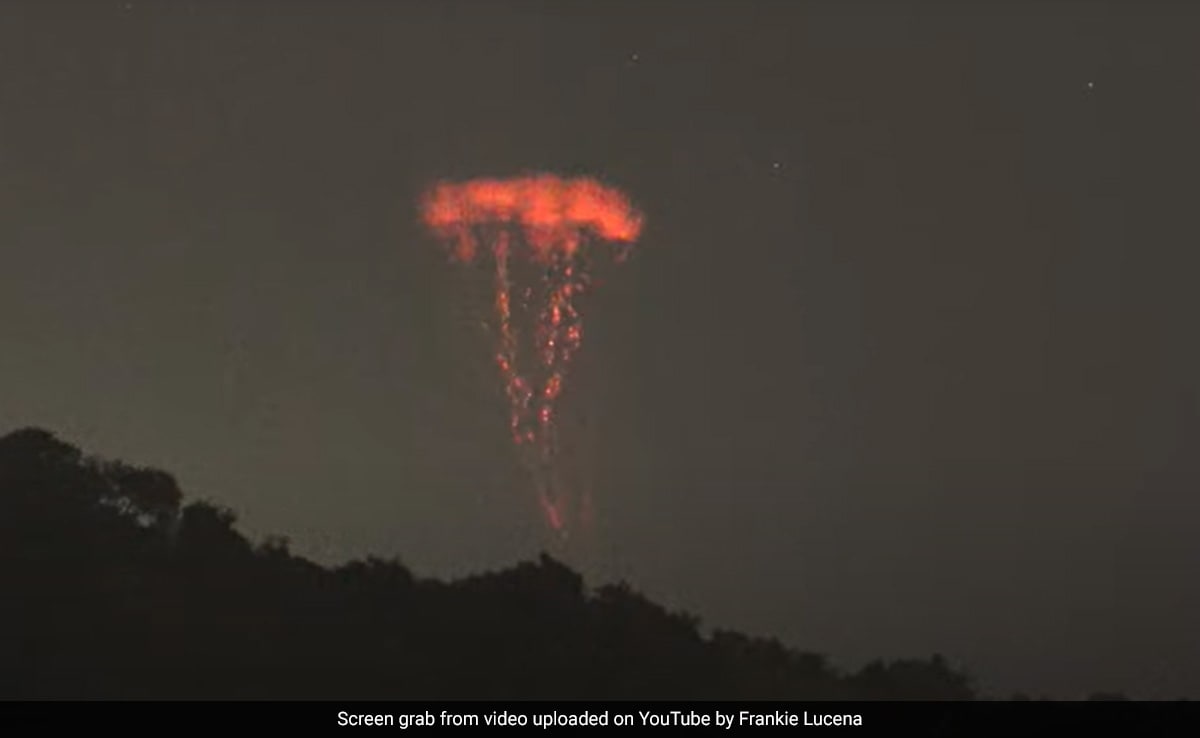
Gigantic jets are 50 times more powerful than typical lightning bolts.
Lightning is one of the oldest observed natural phenomena on earth and is common to the human eye. It has been witnessed and documented by humans for centuries. It is a relatively common and easily visible natural event, especially during thunderstorms. Lightning doesn’t always strike from the sky down to the ground; it can also occur in the opposite direction, moving from the ground to the cloud. This upward-moving lightning is less common and is often referred to as “ground-to-cloud” (GC), gigantic jets,” or “earth-to-cloud” lightning.
Recently, photographer Frankie Lucena, based in Puerto Rico, recorded a remarkable video showing lightning bolts shooting upward into the sky from storm clouds that eventually developed into Hurricane Franklin. These “gigantic jets,” which are seldom witnessed, have the capability to extend all the way to the Earth’s atmospheric boundary, making for a truly astonishing sight.
Watch the video here:
According to Live Science, “they are the rarest and most powerful type of lightning, occurring as few as 1,000 times a year and packing more than 50 times the power of a typical lightning bolt.”
While rare, gigantic jets are not an unfamiliar sight during Atlantic hurricane season. Gigantic jets are reported most frequently in tropical regions, especially during rapidly intensifying tropical storms like Franklin, according to an August 2022 study in the journal Science Advances.
Indeed, the phenomenon of gigantic jets is relatively new to human scientific understanding, having been discovered only about two decades ago. Consequently, people’s knowledge of these events is still in its infancy, and as scientists continue to study these captivating and unexpected occurrences, we can anticipate uncovering more insights about them.
In the past, experts have also observed extraordinary lightning storms arising from various natural disasters, further emphasising the need for ongoing research and exploration in this field.

